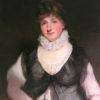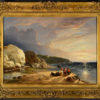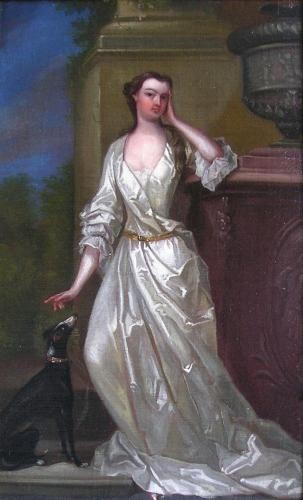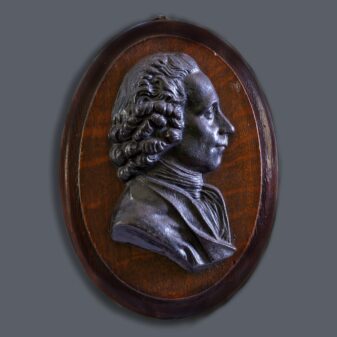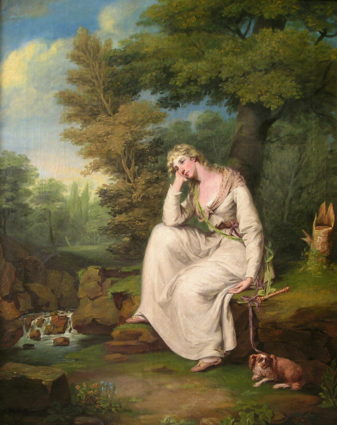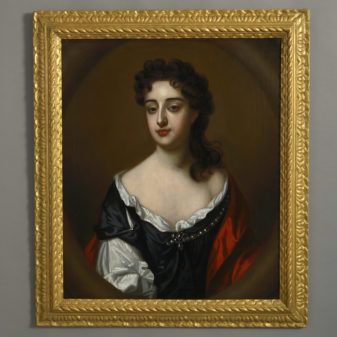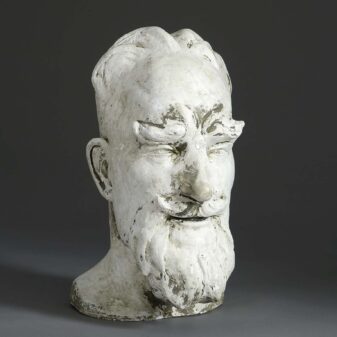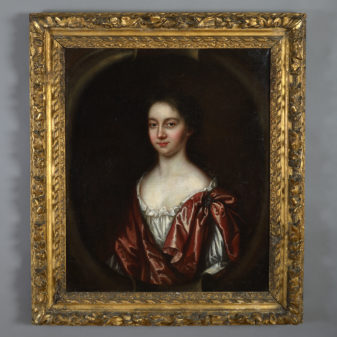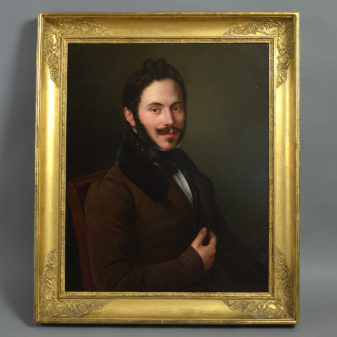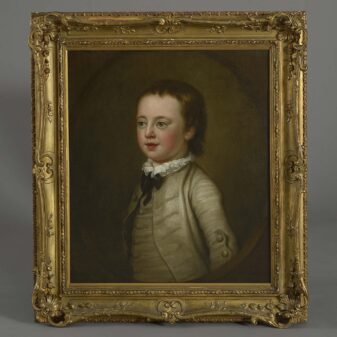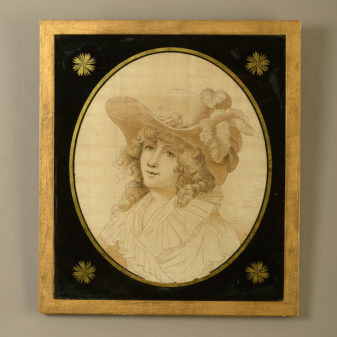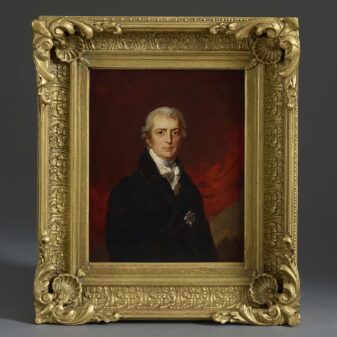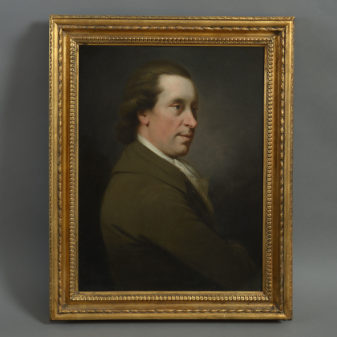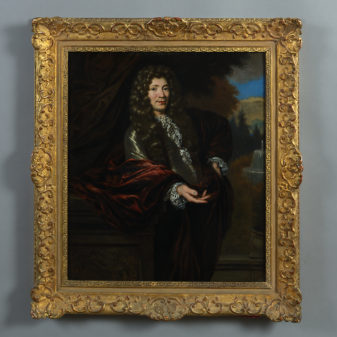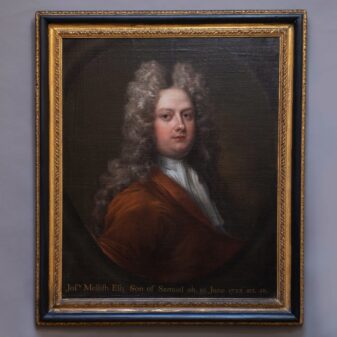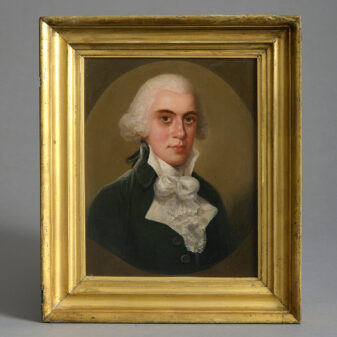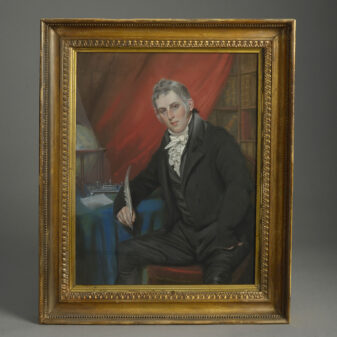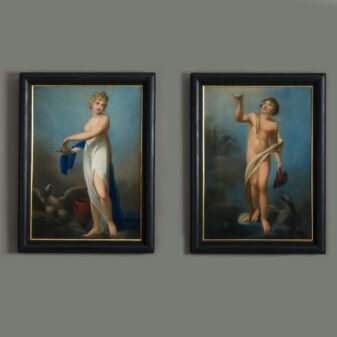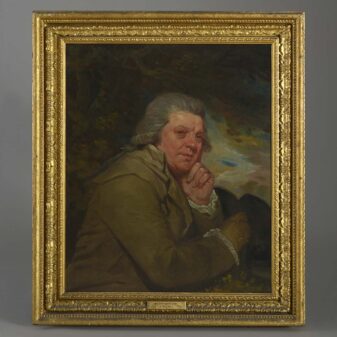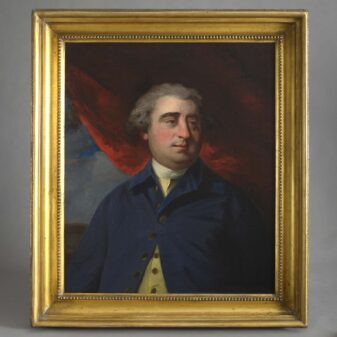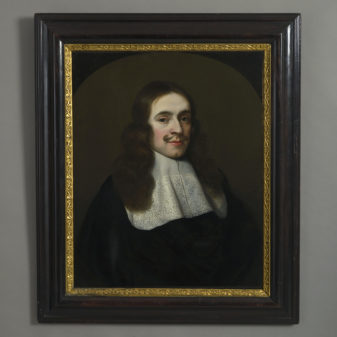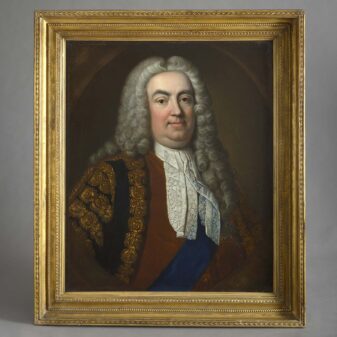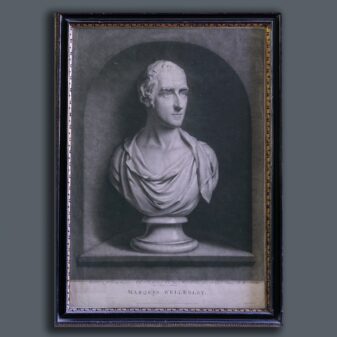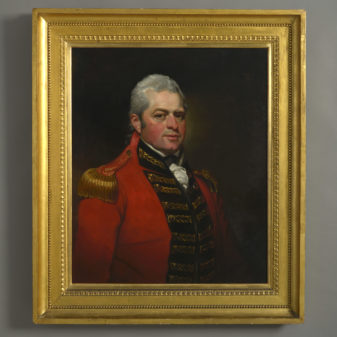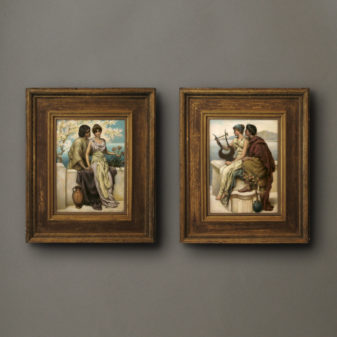After Charles Jervas, Portrait of Elizabeth Egerton (née Churchill), The Countess of Bridgewater
£7,500
SOLD
Oil on canvas; 18 by 11 ½ in; 46 x 29cm; held in a gilt carved frame
Provenance: The David Style Collection, Christies 12/13th January 2005, lot 245; Philip Mould Ltd.
We are most grateful to Caroline Pegum – who is compiling the catalogue of Jervas’s works to include this painting – for her views on this portrait.
Elizabeth Churchill was born into the highest level of English Society: the third daughter and co-heiress of the great English general John Churchill, 1st Duke of Marlborough. She married Scroope Egerton 4th Earl of Bridgewater in February 1703.
‘This Scroop held various high offices at Court in successive reigns; and ‘in consideration of his great merits’ was created in 1720 Duke of Bridgewater. He and his ‘great merits’ are well nigh forgotten, but the memory of his first Duchess still faintly survives, embalmed in the verse of Pope. She was one of the four beautiful daughters and co-heiresses of the great Duke of Marlborough, who left no son to inherit Blenheim and his honours. Jervas, Pope’s friend and teacher in the pictorial art, had painted portraits of this once-famous beauty; and the little bard himself had made various sketches of her, all of which he threw into the fire. Hence several allusions to her in ‘the Epistle to Mr Jervas’ in whose pictures, according to Pope, ‘Beauty, waking all her forms, supplies An angel’s sweetness, or Bridgewater’s eyes’…and…’Churchill’s race shall other hearts surprise.’ (Francis Espinasse: Lancashire Worthies, Chap. XI, 1874).
The artist Charles Jervas (1675-1739) claimed he was in love with the beautiful Churchill heiress who became his muse and inspiration for many portrait commissions. Even Horace Walpole noted ‘many a homely dame was delighted to find her picture resemble Lady Bridgewater’. Taken with her overall beauty, which he appears to have considered ideal, like Kneller and Lely before him, Jervas proceeded to use this as a template for his other portraits, where reality and individual likeness was of secondary importance to a preconceived idea of what constituted an elegant composition and beautiful countenance. In this respect Lady Bridgewater’s features can be seen throughout many of his client’s portraits at this time.
This small and jewell-like full-length painting most certainly records a lost life-sized portrait. Other portraits by Jervas exist, following this composition, but which are reduced to half or three-quarter length formats. (Christies November 19th 1982, lot 82, from the Ellesmere Collection and National Trust, Lanhydrock House Collection). The survival of this copy allows us to appreciate the elegance of the original composition and interestingly depicts the noble greyhound at the Countess’s feet.

